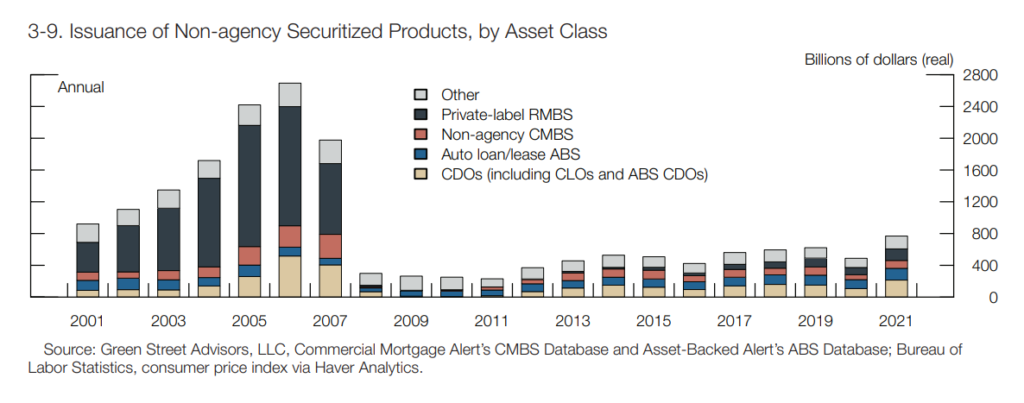Link:https://www.federalreserve.gov/publications/files/financial-stability-report-20211108.pdf
Graphic:

Excerpt:
Our view of the current level of vulnerabilities is as follows:
Asset valuations. Prices of risky assets generally increased since the previous report, and,
in some markets, prices are high compared with expected cash flows. House prices have
increased rapidly since May, continuing to outstrip increases in rent. Nevertheless, despite
rising housing valuations, little evidence exists of deteriorating credit standards or highly
leveraged investment activity in the housing market. Asset prices remain vulnerable to
significant declines should investor risk sentiment deteriorate, progress on containing the
virus disappoint, or the economic recovery stall.Borrowing by businesses and households. Key measures of vulnerability from business
debt, including debt-to-GDP, gross leverage, and interest coverage ratios, have largely
returned to pre-pandemic levels. Business balance sheets have benefited from continued
earnings growth, low interest rates, and government support. However, the rise of the
Delta variant appears to have slowed improvements in the outlook for small businesses.
Key measures of household vulnerability have also largely returned to pre-pandemic
levels. Household balance sheets have benefited from, among other factors, extensions
in borrower relief programs, federal stimulus, and high aggregate personal savings rates.
Nonetheless, the expiration of government support programs and uncertainty over the
course of the pandemic may still pose significant risks to households.Leverage in the financial sector. Bank profits have been strong this year, and capital
ratios remained well in excess of regulatory requirements. Some challenging conditions
remain due to compressed net interest margins and loans in the sectors most affected
by the COVID-19 pandemic. Leverage at broker-dealers was low. Leverage continued
to be high by historical standards at life insurance companies, and hedge fund leverage
remained somewhat above its historical average. Issuance of collateralized loan obligations (CLOs) and asset-backed securities (ABS) has been robust.Funding risk. Domestic banks relied only modestly on short-term wholesale funding and
continued to maintain sizable holdings of high-quality liquid assets (HQLA). By contrast,
structural vulnerabilities persist in some types of MMFs and other cash-management
vehicles as well as in bond and bank loan mutual funds. There are also funding-risk vulnerabilities in the growing stablecoin sector.
Publication Date: November 2021
Publication Site: Federal Reserve